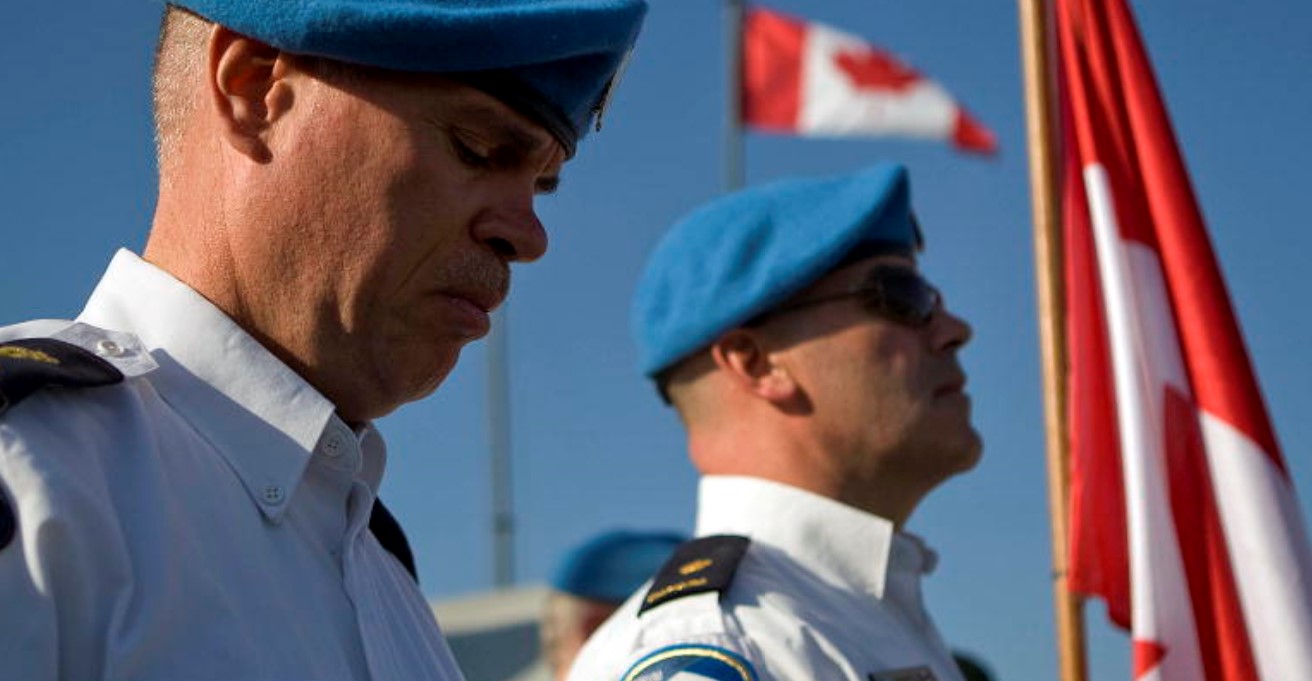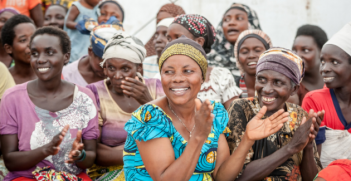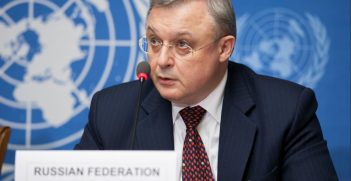Rhetoric Versus Reality in The Rise of Policing in UN Peace Operations: "More Blue, Less Green"?

The role of Police in United Nations (UN) peace operations has shifted such that the organisation is now more deeply involved in missions, evolving from “watchers” to “coaches” in undertaking reform and building up national law enforcement agencies and at times providing interim operational support.
UN peace operations are one of the primary mechanisms through which the international society of states seeks to manage conflict that threatens international peace and security. These engagements have been likened to the role of an impartial police officer (in the democratic ideal tradition) maintaining order and enforcing the law even-handedly—in this case, international law including the relevant UN Security Council resolutions but also other treaty and convention obligations. However, in a domestic context, police have coercive power and apply their own law, whereas once deployed, the UN’s brand of peace operations are limited by sovereignty and predicated on three cardinal principles: the minimum use of force necessary (primarily in self-defence); acting under the consent of the relevant sovereign authorities and other main parties to conflict; and, conducting affairs with impartiality towards the various actors.
Since their inception in 1948, the 71 missions deployed have taken different forms depending on the circumstances and prevailing currents of international affairs. Police officers have featured within UN peace operations since they first appeared in the ONUC mission in the Congo (1960–4). UN Police (UNPOL) became more deeply involved in missions since the 1990s, evolving from “watchers” who observed and monitored to “coaches” undertaking reform and capacity-building of national law enforcement agencies as part of a broader peace-building. UNPOL have also taken on more operational roles over time. This included temporarily assuming executive policing authority in the UN’s transitional administrations in East Timor and Kosovo, but more commonly limited to assisting national police in operations to maintain public security.
Today over 10,000 officers contributed by around 90 countries are deployed to 14 UN peace operations across the world. This rise of UN policing in the last two decades coincided with a period of ambitious peace operations that sought to build sustainable peace. To a large extent, the blueprint for stability in the aftermath of these violent conflicts was predicated on re-establishing the rule of law using democratic models of policing and liberal understandings of a criminal justice system as the guide. Although still significantly outnumbered by the military component, police deployed under a UN flag is critical because the achievement of mandates and exit strategies of missions are increasingly seen as contingent on reformed and strengthened national capacity in public security.
A new generation of UN peace operations
UN peace operations have changed significantly since their original incarnation as lightly armed UN soldiers typically deployed to monitor a ceasefire between warring parties to a conflict. Over 70 years, a spectrum of operations ranging from traditional peacekeeping through large multidimensional to small special political missions have been mounted under the banner of UN peace operations. This array of engagements authorised by the UN security council (UNSC) have been mandated variously to stabilise conflict-affected countries, protect civilians, facilitate political processes, support the organisation of elections, assist in disarmament, demobilisation and reintegration of ex-combatants, promote human rights and restore the rule of law. Since 2013, the overall number of peacekeepers deployed has reduced by 25 percent but in the same timeframe, a new breed of UN peace operations has been spawned.
Large multidimensional missions sent to Mali and Central African Republic (CAR), along with the latest iteration of the shape-shifting engagement in the Democratic Republic of the Congo (DRC) and the one “re-booted” in South Sudan, are operating in non-permissive environments where violent conflict persists. These are characterised by dangerous non-state armed groups where threats to civilians emanate from many different sources. In a departure from traditional peacekeeping and post-conflict assistance, the UNSC has handed down mandates impelling more robust postures and proactive approaches focused on protection of civilians and stabilisation through the extension of state authority.
UNPOL have been required to push beyond their traditional remit of reform and capacity-building with occasional and limited forms of operational support. While still expected to pursue these traditional tasks, police peacekeepers have also been directed to undertake a broader set of tasks while operating in more testing conditions. This includes coordinating with offensive operations by the military, assisting in implementing the protection of civilians (PoC) mandate—particularly in urban areas and deploying into situations where state actors are causing harm to civilians—prioritising addressing impunity for conflict-related sexual and gender-based violence, and tackling transnational threats posed by organised crime and at times violent extremism.
Changing roles and emerging challenges for UNPOL:
Protecting civilians
The mandate of Protection of Civilians (PoC) from threat of physical harm was initially understood in predominantly military terms but over time has been increasingly mainstreamed across different mission components. Over 90 percent of UNPOL operate under a PoC mandate making it a fundamental part of what UNPOL are directed to do. It has also become central to how UNPOL describe their work in peace operations. A common mantra of police services around the world is “to serve and protect” and many see “protection” as their core business.
However, while it may be a key part of domestic policing, PoC in peace operations settings presents different challenges. International police do not share the authority or capacity of their domestic counterparts. Police in peace operations are required to undertake tasks unlike their “day-job” such as capacity-building, cooperating with military and civilian components of mission. They are also expected to respond to different types of threats including more severe violence targeting civilians as a deliberate tactic.
As part of PoC efforts, UNPOL have been increasingly asked to work jointly with the military component in high risk, often urban areas, creating an overlap in the military and police functions of UN peace operations. Challenges in coordination and cooperation between the police and the military in peace operations have a long history, but the changed operating context is presenting novel challenges in this regard. For instance, in CAR an innovative joint task force was set up to stabilise the capital Bangui. Originally under police command, a deterioration of the security conditions in 2015 led to a transfer to military command and control. Despite policies that lay out the division of labour and criteria for handover of responsibilities, in practice, there have been occasions where UNPOL operating under military command have been encouraged to operate outside their own Directives on the Use of Force (DUF). Similar frictions exist in other missions and it is likely that they will continue to do so as long as missions are requested to operate in contexts where insecurity escalates quickly from threats of a more criminal to a more military nature.
Tackling organised crime
75 percent of today’s missions are deployed to places where Transnational Organised Crime (TNOC) is a key characteristic of the conflict system, including links between organised crime and global terrorist groups. In addition to special political missions in Guinea Bissau, Afghanistan, Libya, Somalia, and Colombia, the big multidimensional operations in DRC, CAR, Mali, South Sudan, are deployed in regions replete with trafficking in persons, arms, drugs and natural resources. Such illicit economic activity often involves and invariably fuels armed groups and constitutes a driver of instability in many UN peace operations contexts. This has been increasingly recognised by the UN Security Council as serious threat to international peace and security, but missions have been provided with little and/or an unclear mandate to tackle this meaningfully. Provided with neither the resources nor the authority, UN peace operations have been unable to significantly disrupt criminal political economies that perpetuate conflict.
In the absence of clear strategic direction, dealing with TNOC has often fallen to UNPOL. In addition to regional initiatives in areas where peace operations are deployed (e.g. West African Coast Initiative (WACI) tackling drug trafficking), specific UNPOL components have also undertaken a range of operational activities to tackle TNOC. For instance, in Mali, the MINUSMA police component created a Serious Organised Crime (SOC) support unit containing 20 individual police officers dedicated to supporting the Malian authorities with training and equipment to disrupt and respond to TNOC issues. Similar units have been created in CAR (MINUSCA) and the DRC (MONUSCO). In the latter case, there have also been innovative efforts including employing an expert analyst on TNOC and the involvement of the armed groups in eastern DRC.
People-centred approaches
UNPOL’s community-oriented policing approach means that they are often the first point of contact with local populations and can, therefore, have an important impact on local perceptions of peace operations. If UNPOL are effective in protecting civilians and facilitating the work of domestic police, the credibility of missions can be enhanced. In making contact with communities UNPOL can also play important roles in early warning, provide visible presence in risky areas, and a sense that the local police cannot predate in that area. While often a role attributed to the military in peace operations, UNPOL can also enable the work of other mission components who require armed escorts to travel to remote areas including human rights monitors, civil affairs officials, women and children protection officers. These benefits have contributed to the UN using police in greater numbers and in ever more creative ways.
However, non-permissive operating environments and stringent UN regulations around safety and security present impediments to UNPOL implementing their community oriented policing model. First, insecure mission settings lead to increased use of formed police units (FPUs) due to them being armed and more capable of protecting themselves and others. Currently, two-thirds of all UNPOL are deployed in the shape of these FPUs. Individual police officers (IPOs) are traditionally unarmed and conduct foot patrols around villages, talking to people, often hand in hand with national police. By contrast, FPUs invariably drive armoured vehicles, carry arms, often wearing military-like fatigues, and tend to pass through town without much interaction. This creates barriers between peacekeepers and local communities and diminishes the impact of community-oriented policing approaches and the supposed comparative advantage discussed above. Furthermore, this militarisation of international policing represents an internal contradiction for the UN sending mixed messages to societies recovering from violent conflict often characterised by abusive and highly militarised security forces.
Conclusion
This article has examined the emerging challenges facing UN police as a result of the changing nature of UN peace operations. As missions have been increasingly sent to active conflict zones, UNPOL have been called upon to help stabilise and restore public order, protect civilians and tackle the threats posed by transnational crime and violent extremism in situations where there is little peace to keep. These new operating environments have provided the opportunity to exploit perceived comparative advantages of police over military forces but also generated new impediments to their effectiveness.
However, notwithstanding the contributions police can make to the ambitious objectives of contemporary missions, the future shape and even existence of peace operations is uncertain. If the proven benefits that peace operations provide to international conflict management are to be preserved going forward, then those involved—particularly the influential members of the UNSC funding and authorising these missions—will have to be prudent in their pragmatism.
This article is an extract from Dr Charles Hunt’s article in the Australian Journal of International Affairs titled “Rhetoric Versus Reality in The Rise of Policing in UN Peace Operations: “More Blue, Less Green’?” It is republished with permission.





